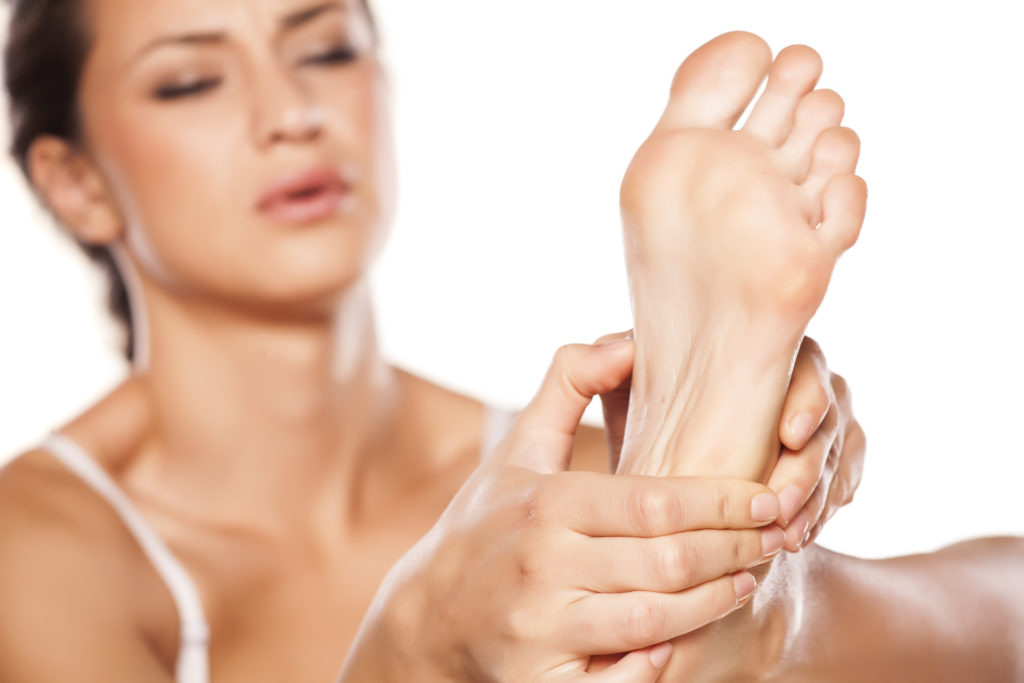Blisters
Blisters are one of the most common foot problems and happen to almost everyone. At worst, they can be annoying and sometimes get in the way of daily activities like walking, running, and exercising. Blisters get bigger when fluid builds between the torn skin and your toe, which can be painful when they burst.
How to help prevent blisters:
 Wear shoes that can be easily put on. Not too tight, or loose. Even loose-fitting shoes can cause blisters as the foot slides around in the shoe, creating repeated friction against the skin.
Wear shoes that can be easily put on. Not too tight, or loose. Even loose-fitting shoes can cause blisters as the foot slides around in the shoe, creating repeated friction against the skin.- Wear foot pads, also called blister cushions, if you know you will be wearing shoes that may get uncomfortable. Ladies are sure to know this problem too well with regards to wearing heels!
- Whether you are exercising or commuting to work, keep your socks and feet dry. Wetness or even dampness irritates the skin which makes it softer, and more prone to blister.
Athlete’s Foot
The term athlete’s foot was first used in the 1920’s by doctors after their patients complained of itchy, inflamed, and painful feet shortly after visiting public pools, locker rooms, or bath houses. Athlete’s foot is caused by the tinea fungus, which can be spread to others who come in contact with the fungus.
Ways to prevent athlete’s foot:
- Don’t share your shoes, socks, or towels with others, especially if they have athlete’s foot or are prone to getting it.
- Keep your feet nice and dry. This fungus, like most others, likes a nice, warm and damp environment, so keeping your feet dry prevents it from growing.
- Avoid walking around barefoot in public places such as swimming pools, locker rooms, bathrooms, common shower areas, and even spas. Basically, anywhere people may have walked barefoot.
Corns & Calluses
Your body is smart and how to protect itself from possible harm. Such is the case with corns and calluses. Corns are similar to warts in shape and size and usually form on or between the toes. Calluses are layers of thickened skin that form on the bottom of the feet, or on the sides of the toes.
Ways to prevent calluses and corns:
- Again, very important to wear properly fitting shoes. Calluses form when the skin tries to protect itself from irritation and excessive pressure on the feet.
- Add padding to your shoes – either as a whole shoe insert, or small pads that cover specific areas. This will cushion your feet and absorb any hardness caused by your shoe.
- Avoid wearing excessively narrow or pointed shoes. High heels also put pressure on your feet, and the higher the heel, the more pressure there is.
Ankle Sprains
1 in 20 high school student athletes will sprain their ankle in just one school season. But you don’t have to play sports to be at risk. Missing a step while running down the stairs, or accidentally stepping into a pothole can also cause a sprained ankle. Anytime the foot twists in an awkward position, the ligaments in the foot will stretch or tear and cause a sprain.
Here’s how to help prevent an ankle sprain:
- Do foot exercises that stretch and strengthen the ligaments in your feet, so they are more rigorous and flexible. The more flexible the ligaments, the less likely you will fall into a weird position. And if you do, your feet will at least be able to accommodate the impact better.
- Wrap your feet in a protective brace, like one made of fabric, if you exercise at fast speeds, or do repetitive motions. This helps stabilize and protect your foot.
- If you’re the kind of person who tends to get lost in your own thoughts, or if you tend to be clumsy, start paying more attention to your surroundings. Being mindful of your body when in motion is not only good for your mental health, it might even prevent a sprain!
As always, if your feet are hurting for any reason, make sure to call our Evanston office – Evanston Podiatric Surgeons at 847-475-9030, or Downtown Chicago office – Mag Mile Foot and Ankle Institute at 312-236-3507. Our care options for foot injuries and pain include some of the most cutting-edge procedures and technologies available!
